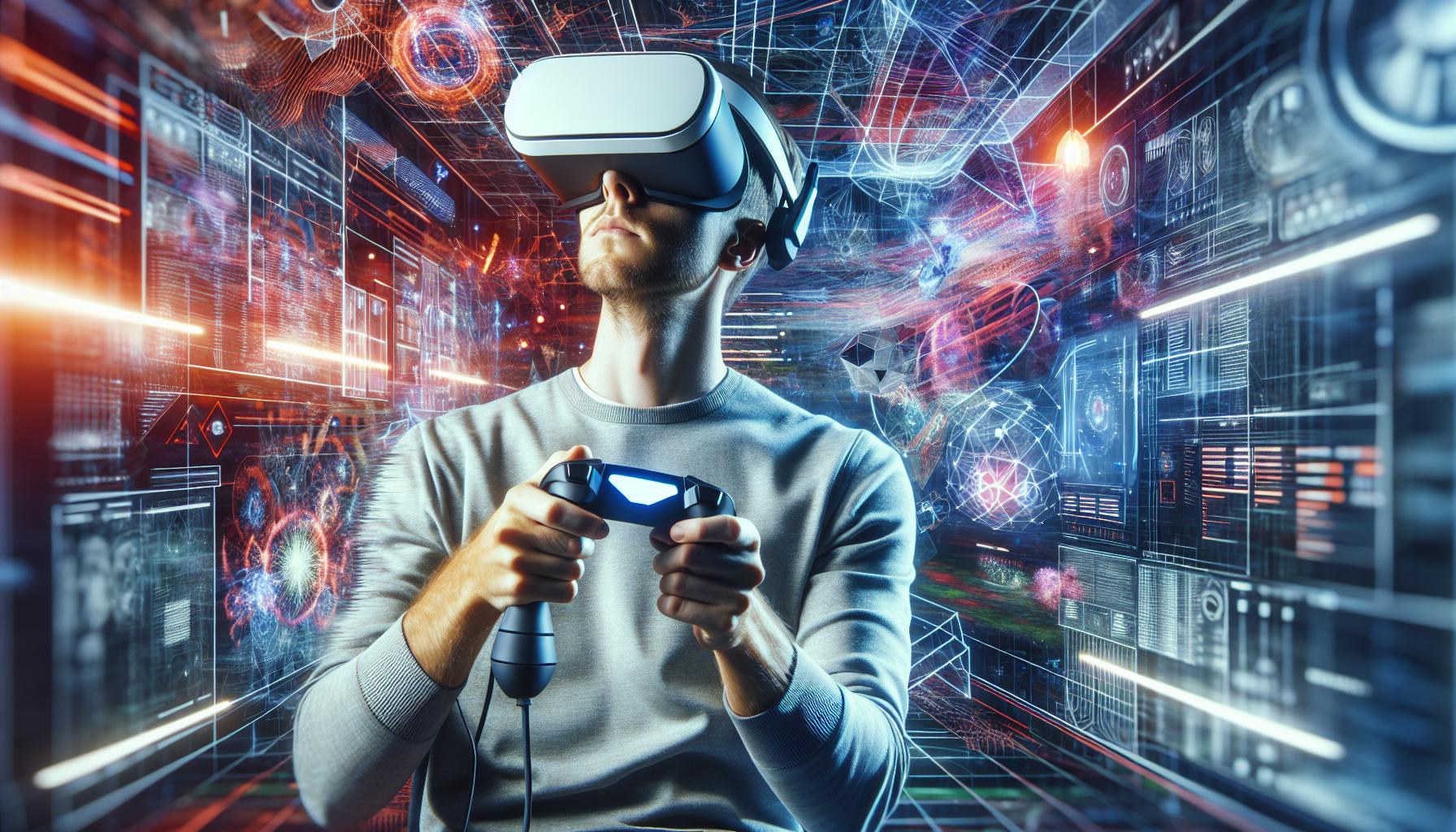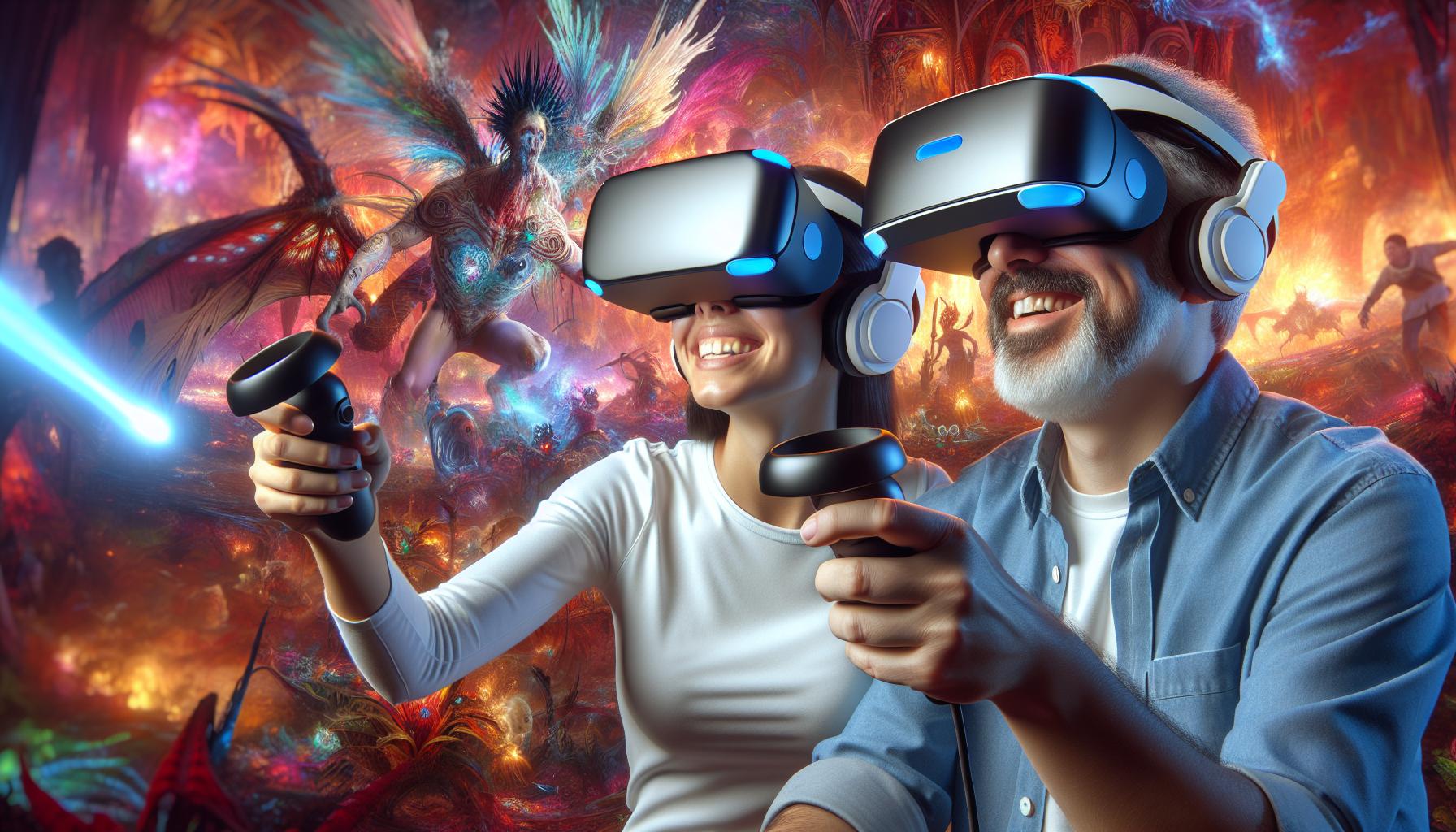Key Takeaways
- Definition Distinction: Virtual Reality (VR) immerses users in entirely digital environments, while Augmented Reality (AR) overlays digital elements on the real world.
- Immersion Levels: VR provides a comprehensive immersive experience that completely blocks out the physical world, contrasting with AR’s less immersive approach that keeps users connected to their real surroundings.
- Interaction Methods: VR allows users to interact within a controlled digital space using gestures and movements, whereas AR integrates digital content with the physical environment, enabling simultaneous interactions.
- Diverse Applications: VR is primarily used in gaming and training, offering innovative simulations, while AR enhances experiences in sectors like retail and healthcare by providing interactive visualizations.
- Impact on Learning: Both technologies significantly enhance educational approaches; VR provides risk-free training scenarios, and AR enriches learning through interactive and engaging content.
- Industry Adoption: Understanding the differences between VR and AR is crucial for navigating their growing applications across various industries, shaping future interactions with technology.
In a world increasingly defined by technology, virtual reality (VR) and augmented reality (AR) are revolutionizing how people interact with their environments. While both offer immersive experiences, they cater to different needs and applications. VR transports users into entirely digital realms, creating a sense of presence in a simulated world. On the other hand, AR overlays digital elements onto the real world, enhancing everyday experiences without removing users from their surroundings.
As industries from gaming to education embrace these technologies, understanding their differences becomes crucial. This article dives into the unique features, benefits, and potential challenges of VR and AR, helping readers navigate the rapidly evolving landscape of immersive technology. Whether it’s for entertainment, training, or practical applications, knowing the distinctions between these two powerful tools can shape the future of how we engage with the world around us.
Virtual Reality vs Augmented Reality
Virtual reality (VR) and augmented reality (AR) represent distinct but complementary technologies that transform user experiences. Understanding their definitions lays the groundwork for recognizing their unique applications and benefits.
Definition of Virtual Reality
Virtual reality immerses users in entirely digital environments, utilizing headsets and motion sensors to create a fully interactive experience. Users lose awareness of the physical world while engaging with computer-generated scenarios and objects. VR is primarily used in gaming, training simulations, and therapeutic applications, providing an escape from reality.
Definition of Augmented Reality
Augmented reality overlays digital elements onto the real world, enhancing a user’s perception of their environment. This technology utilizes smartphones, tablets, or smart glasses to display interactive graphics and information, seamlessly blending digital and physical elements. AR is widely used in fields such as retail, education, and healthcare, offering enhanced information access and user engagement.
Key Differences Between Virtual Reality and Augmented Reality

Understanding the distinctions between virtual reality (VR) and augmented reality (AR) enhances comprehension of their applications and implications in various fields. Below are the critical differences in immersion levels and interaction.
Immersion Level
VR offers a complete immersion experience, creating an entirely synthetic environment that blocks out the real world. Users engage with VR through headsets and sensory devices, which transport them to different worlds or scenarios. This immersive quality enables applications in gaming and training, where realism significantly impacts the results. Conversely, AR maintains a connection to the real world, overlaying digital content onto users’ actual environments. Users view AR through smartphones or smart glasses, enriching their experiences without total immersion. This lesser degree of immersion facilitates real-time interactions and practical applications in contexts like education and retail.
Interaction and Engagement
Interaction in VR occurs in a fully controlled digital environment, where users can manipulate objects or navigate spaces. These interactions often involve gestures, movements, and even voice commands, promoting a high level of engagement. For example, VR training simulations can replicate complex scenarios where users practice skills in a risk-free setting. AR, however, enhances engagement by blending digital elements with the real world. Users can interact with both digital items and physical surroundings simultaneously. Applications like interactive gaming or educational tools demonstrate AR’s ability to maintain user focus and encourage participation without isolating them from their immediate environment.
Applications of Virtual Reality

Virtual reality (VR) features diverse applications across various industries, enhancing user experiences significantly. Primarily utilized in gaming and education, VR offers innovative solutions that transform traditional methods.
Gaming and Entertainment
Gaming and entertainment heavily rely on VR technology to create immersive experiences. Users engage in lifelike environments and interact with digital elements seamlessly. Popular titles like Beat Saber and Half-Life: Alyx illustrate VR’s potential, offering players captivating adventures that stimulate engagement and competition.
Moreover, VR is utilized in social platforms, enabling users to connect with friends in virtual worlds. Events such as concerts and virtual meetups showcase VR’s capacity to foster community among players. These advancements continue to redefine how individuals experience and interact with digital media.
Education and Training
Education and training applications of VR significantly enhance learning experiences. Institutions implement VR simulations to provide students with practical experiences in fields such as medicine, engineering, and aviation. For example, medical students use VR to practice surgical procedures in a risk-free environment, improving their skills and confidence before real-life applications.
Additionally, employee training programs leverage VR to immerse workers in realistic scenarios. Industries such as manufacturing and healthcare utilize VR for simulating hazardous situations, allowing employees to develop problem-solving skills without exposure to actual risks. These methods contribute to more efficient and effective learning outcomes.
Applications of Augmented Reality

Augmented reality (AR) finds diverse applications across multiple sectors, enhancing real-world interactions with digital information and visuals. This technology is particularly transformative in retail, healthcare, and education.
Retail and Marketing
AR revolutionizes retail by providing interactive shopping experiences. Retailers use AR to allow customers to visualize products in their environments before purchasing. Examples include virtual fitting rooms where customers can try on clothes digitally, and furniture apps that let users place 3D models of products in their homes. Companies like IKEA and Sephora leverage AR to enhance customer engagement, driving sales and improving satisfaction.
Healthcare and Medical Training
AR significantly benefits healthcare by improving training and patient care. Medical students utilize AR for interactive anatomy lessons, gaining a 3D perspective on complex structures. Surgeons employ AR during operations to overlay critical patient data onto the surgical field, enhancing precision and decision-making. Notably, companies like AccuVein developed AR technology to visualize veins, facilitating easier venipuncture procedures.
Virtual Reality And Augmented
The distinction between virtual reality and augmented reality is crucial for understanding their respective roles in enhancing user experiences. Each technology offers unique advantages that cater to different needs and contexts. While VR creates immersive environments ideal for gaming and training, AR enriches real-world interactions, making it invaluable in sectors like retail and healthcare.
As these technologies continue to evolve and integrate into daily life, their impact on various industries will only grow. Embracing both VR and AR will empower users to navigate a more interactive and engaging world, ultimately shaping the future of how people connect with technology and each other.